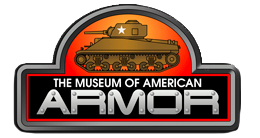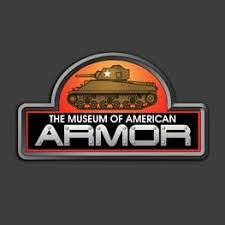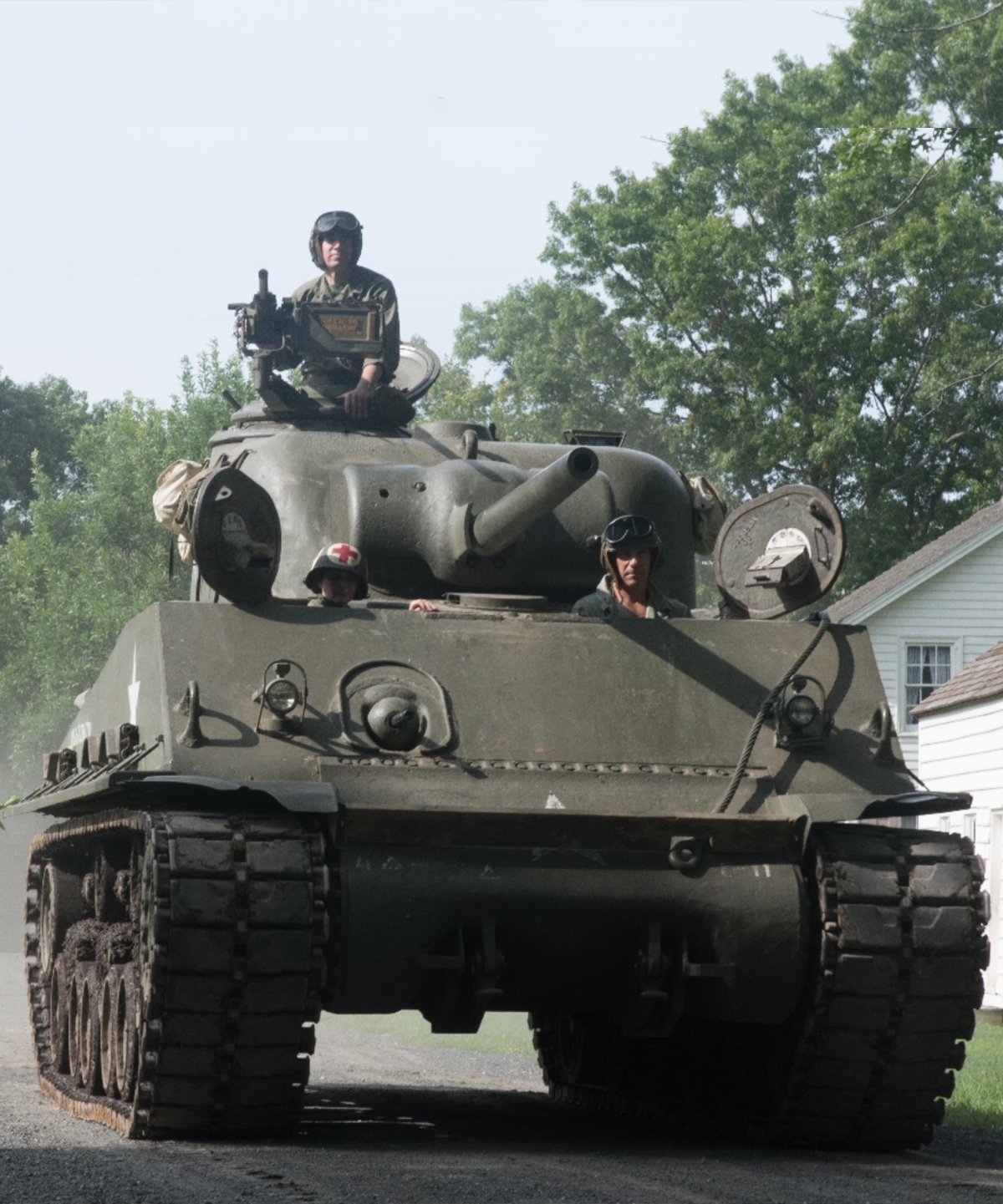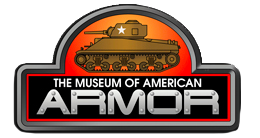The year 2022 marked the 80th Anniversary of the introduction of the M4 Sherman series of medium tanks. The first of the many – nearly 50,000 Shermans were ultimately built – were M4A1s and they began to roll off the Lima Locomotive Works assembly line in April of 1942. These tanks were shipped immediately to North Africa where they first saw combat with British troops that same year and then with U.S. troops there in 1943. American production of the Sherman then rapidly increased with numerous manufacturers producing five major variants of the M4 family; it served with distinction in every theater of the Second World War and then well beyond into the Cold War years.
It’s fitting then to take the anniversary and more closely explore The Museum of American Armor’s own M4A3E8 Sherman. We spotlighted our Sherman during the annual WWII Encampment Weekend and it also graced the cover of our “Summer 2022” Museum magazine “Freedom Force”. It continues to be a popular exhibit at the Museum and the familiar Sherman profile figures prominently in our Museum logo. Let’s take a closer look at our own M4, examining its origins, the changes made to it by both the military and later by civilian owners, how it came into Museum ownership and the work that has gone into it by Museum volunteers. Finally, let’s probe the question as to whether the Armor Museum’s M4 replicates an actual Sherman variant.
THE ORIGINS, AN M4A3(105) HVSS
Our particular Sherman began life at the Chrysler Detroit Tank Arsenal in February of 1945. It was built as an M4A3(105)HVSS. It incorporated the major internal and external characteristics of the M4A3 Medium Tank, including the Ford GAA V8 engine and 47 degree hull glacis plate. As did most Shermans built in late 1944 and beyond, it had the newer horizontal volute spring suspension system, or HVSS. Aside from this, its main difference from the standard Sherman Medium Tank of the day was its main armament. Rather than a 75MM or 76MM gun, it mounted a 105MM howitzer, designed for indirect artillery support at the battalion level. During this period of its career, it bore Serial #65707 and Registration # USA 30125029.
%20HVSS%20Sherman%20sitting%20in%20front%20of%20a%20military%20hangar.png?width=1666&height=942&name=M4A3(105)%20HVSS%20Sherman%20sitting%20in%20front%20of%20a%20military%20hangar.png)
A typical M4A3(105) HVSS Sherman
US ARMY MODIFICATION TO M74 STANDARDS
As newer mobile artillery platforms entered service post-World War II, the Sherman’s role in this particular capacity diminished. Still a very capable tracked vehicle, however, in March of 1954 the Army ordered our vehicle to the Bowen-McLaughlin-York Company (BMY) for conversion to an M74 Armored Recovery Vehicle or ‘tank retriever’. The M74 was tasked with the recovery and heavy repair of other armored vehicles in the field. The Museum, of course has our own operational M74, acquired in 2022.
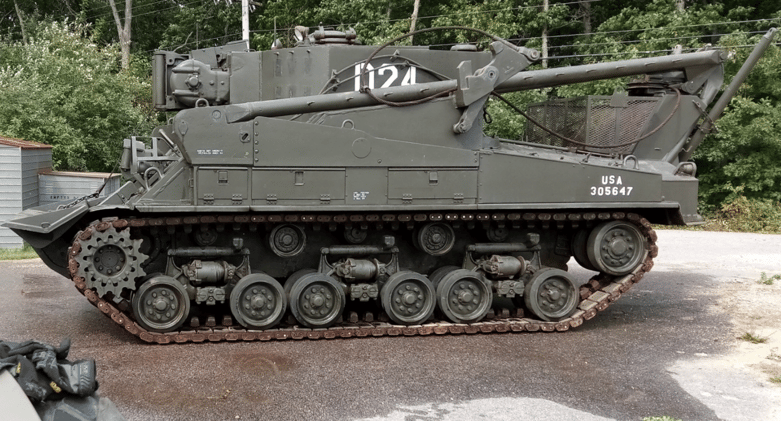
Museum of American Armor’s Operational M74 Exhibit, Crane Boom Retracted
The BMY conversion of the M4A3E8(105) HVSS to an M74 involved the complete removal of the 105MM howitzer and armored turret and then their replacement with powerful winches and a heavy-lift folding A-frame crane. The hull’s upper deck was modified to accommodate a non-rotating superstructure and tool lockers were added to the sponsons. Otherwise, the lower hull, suspension, tracks and drivetrain remained largely as originally constructed.
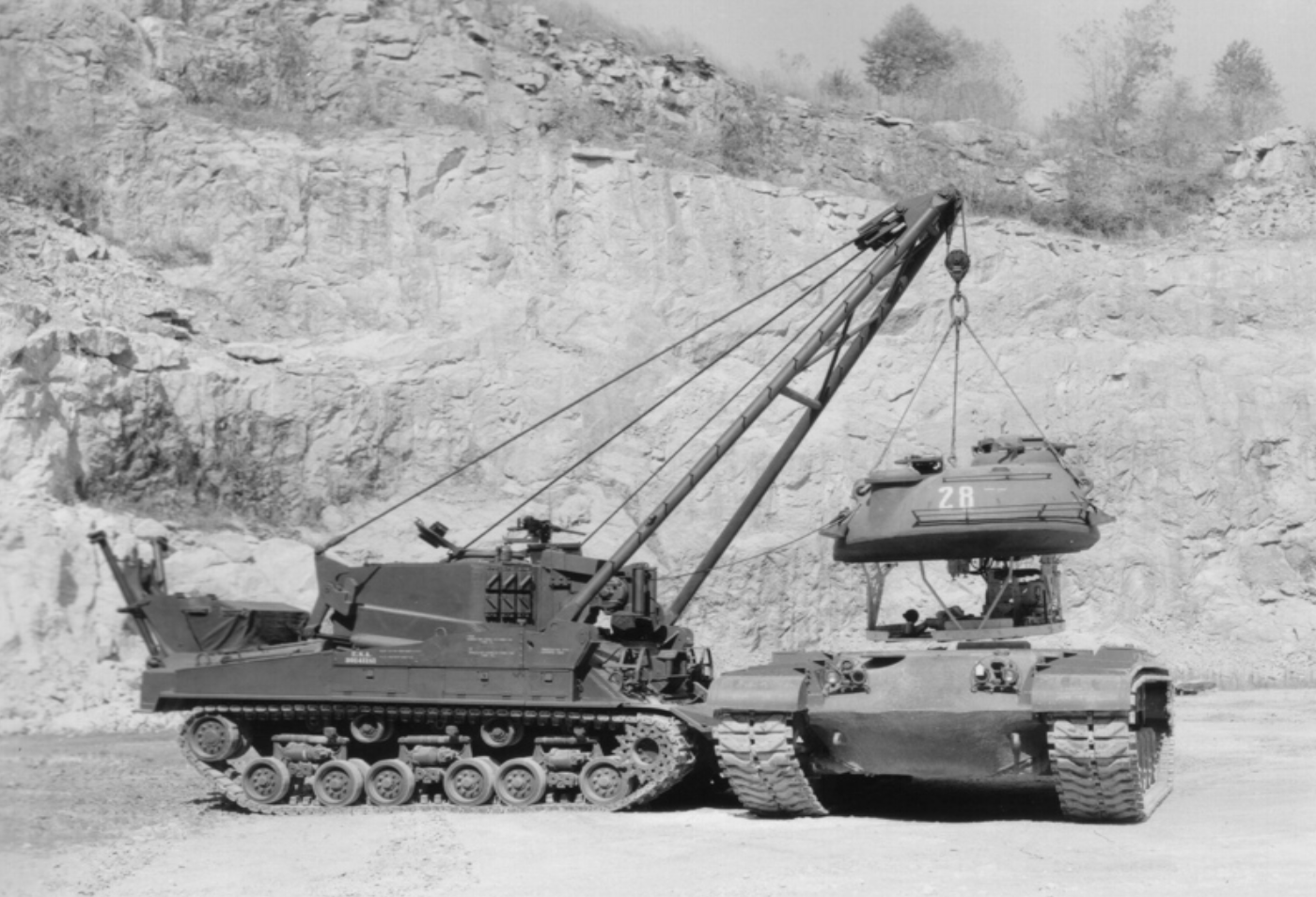
An M74 At Work With Boom Deployed
The Army assigned our M74 conversion Serial Number #431. The data plate installed by BMY during the rebuild still resides inside the lower hull of our Sherman and a photo of it is shown below. Note the conversion date, BMY name, and M74 serial number.
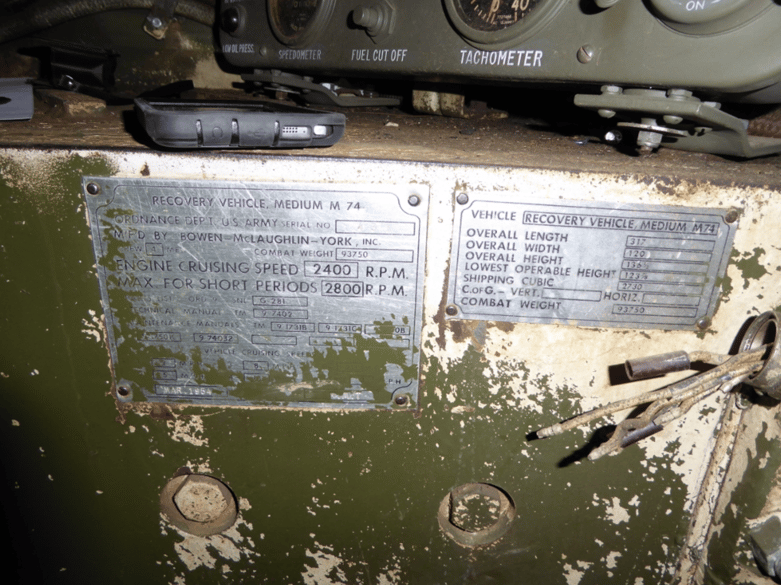
M74 Conversion Data Plate Inside The Museum’s Sherman
INTO CIVILIAN HANDS
Years later this particular M74 was declared surplus by the military and ultimately sold to a civilian buyer in Holland. With some rather inventive work, the new owner converted it back to the appearances of a Sherman gun tank. All of the internal winches and external crane equipment were removed as was the associated upper structure and tool boxes. The owner then decked over the now open portion of the upper hull with steel plating. He then separately sourced a mid-production 75 MM Sherman turret, less the gun. With no true turret ring in the now newly modified upper hull, the turret will not rotate nor does it have a turret basket or other associated turret fixtures.
It’s not clear what was used to simulate a main gun tube as it is shrouded in a dust cover in our only known photos of it during this period. No .30 caliber bow machine gun is fitted. The uniformed new Dutch owners and their freshly refurbished prize possession are shown below; note the M8, M3 Halftrack and jeep in the photo backgrounds.
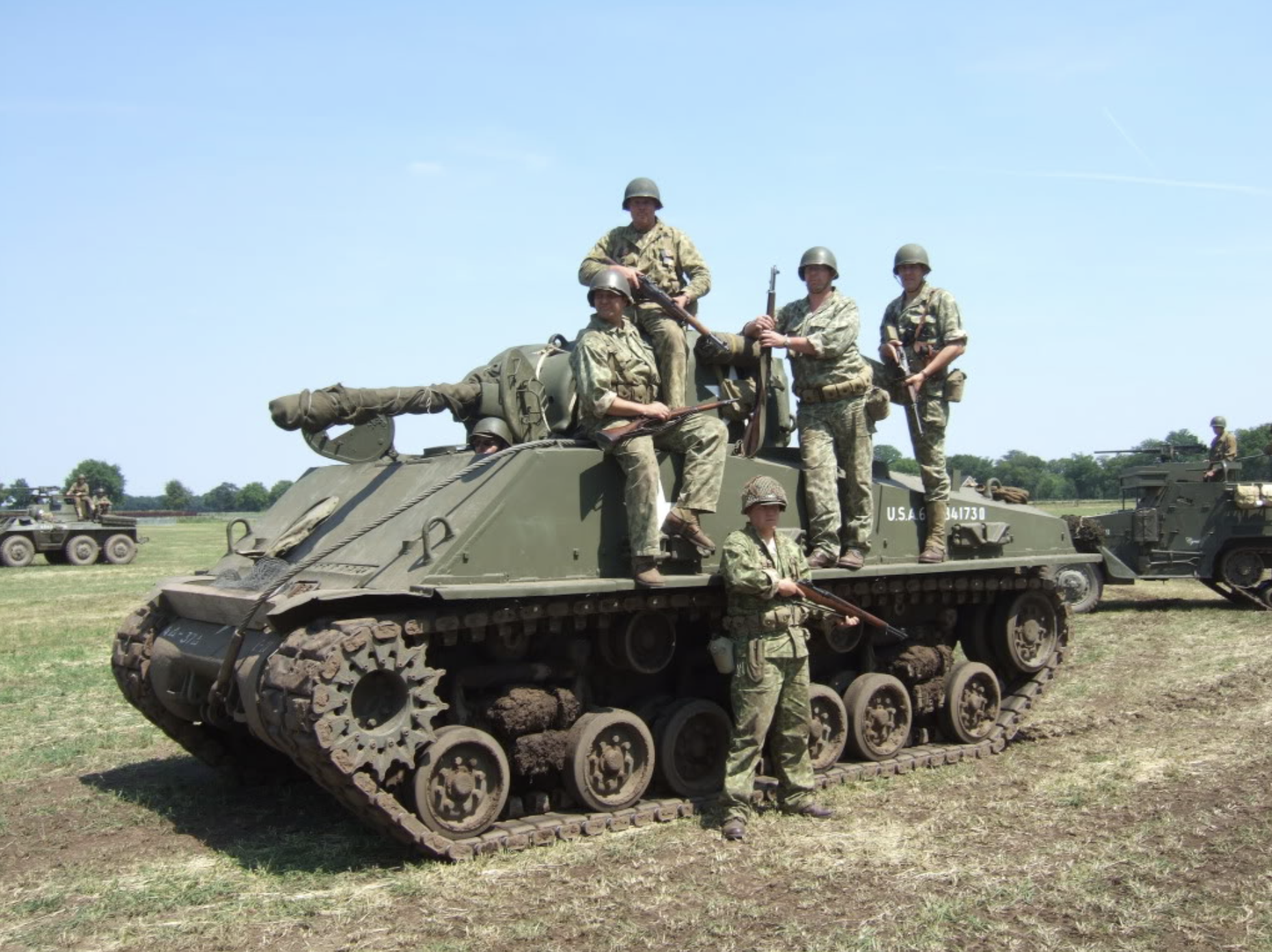
Dutch civilian owners with their re-converted M74/Sherman
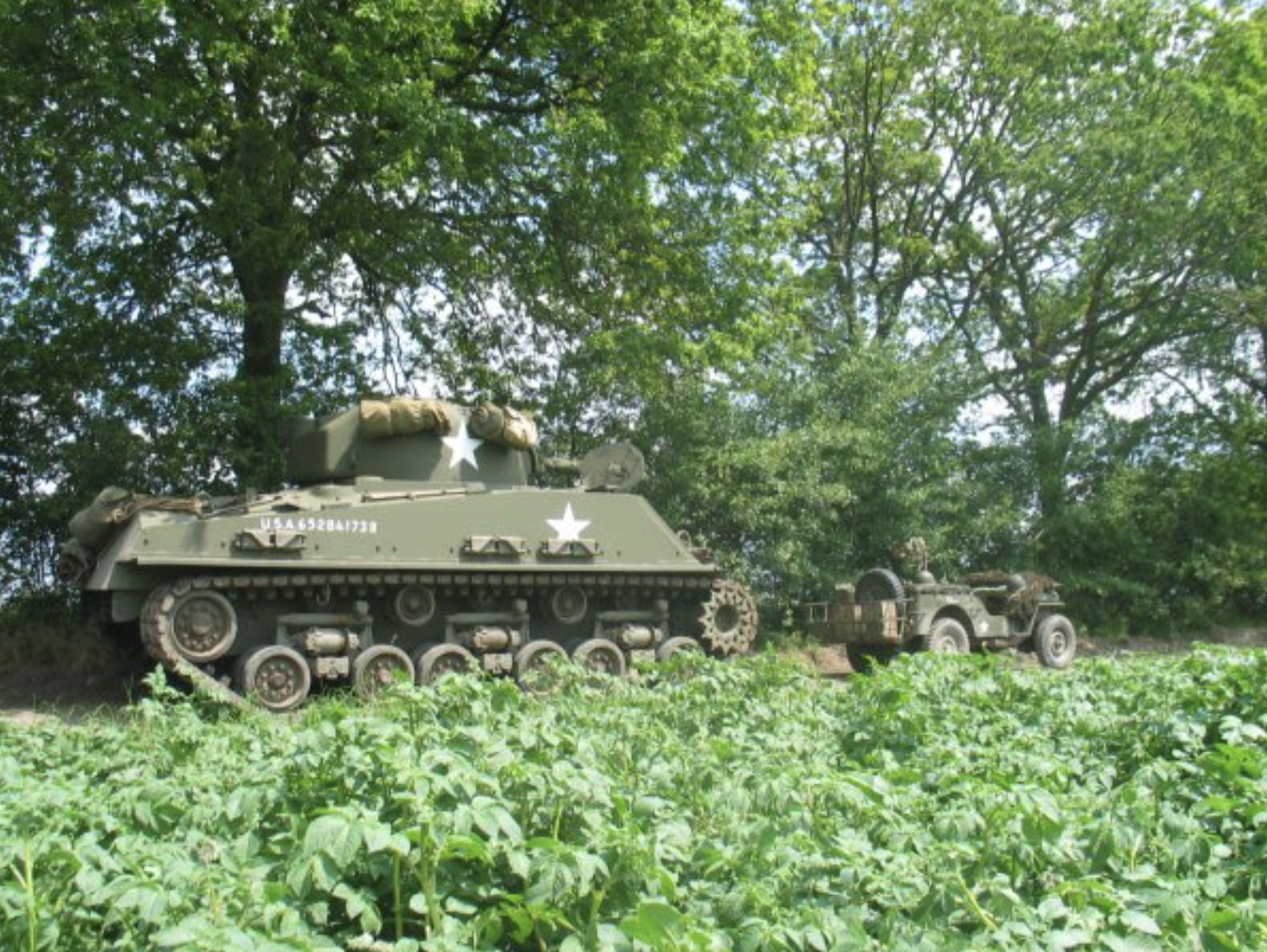
Another view of the transformed M4 while in Holland
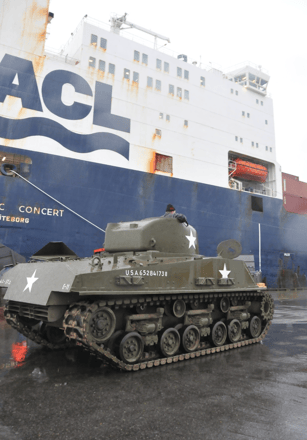
MUSEUM OF AMERICAN ARMOR ACQUISITION
During 2010, the newly formed Museum of American Armor negotiated the purchased of this vehicle from its European owners. After having successfully completed the second of its two trans-Atlantic voyages, our Sherman came home to the United States, arriving at the Port of Newark in early November of 2010. Museum volunteers met the arrival at the docks, cleared the extensive paperwork and then assisted in its move from the port. Note the absence of any main gun tube and several additional accessories lashed to the front hull.
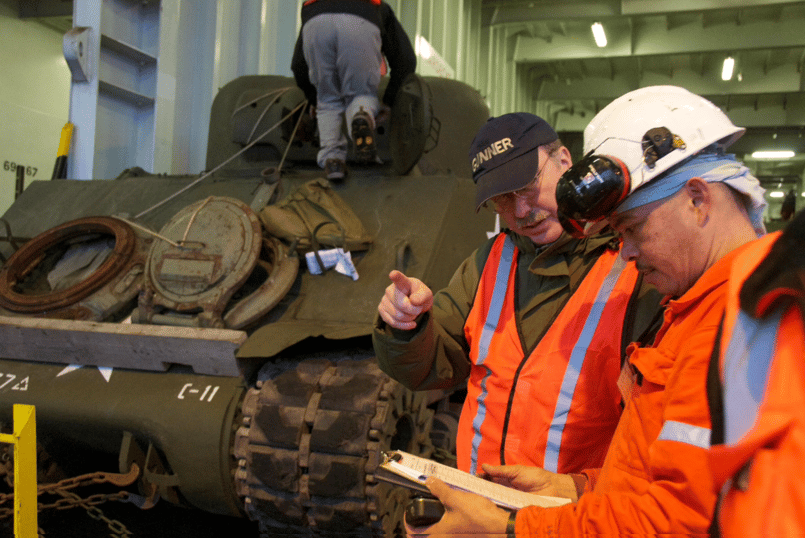
Museum of American Armor Changes and Maintenance
While the fledgling Museum of American Armor had already begun to collect a respectable number of operational military vehicles, the dream of a new, dedicated museum facility was still a few years away. The newly acquired M4 was trucked to the Museum’s interim home adjacent to the American Airpower Museum at Republic Airport in Farmingdale, New York.
Anxious to display our new M4 as well as honor our past and present military personnel, the decision was made to dedicate the Sherman on Veterans Day, 2010. As previously noted, however, our Sherman came to us without a gun or suitable tube replica. As an expedient measure for the ceremony, a piece of pipe was inserted into the gun shield. The newly “armed” Sherman is shown below, parked outside at Republic Airport.
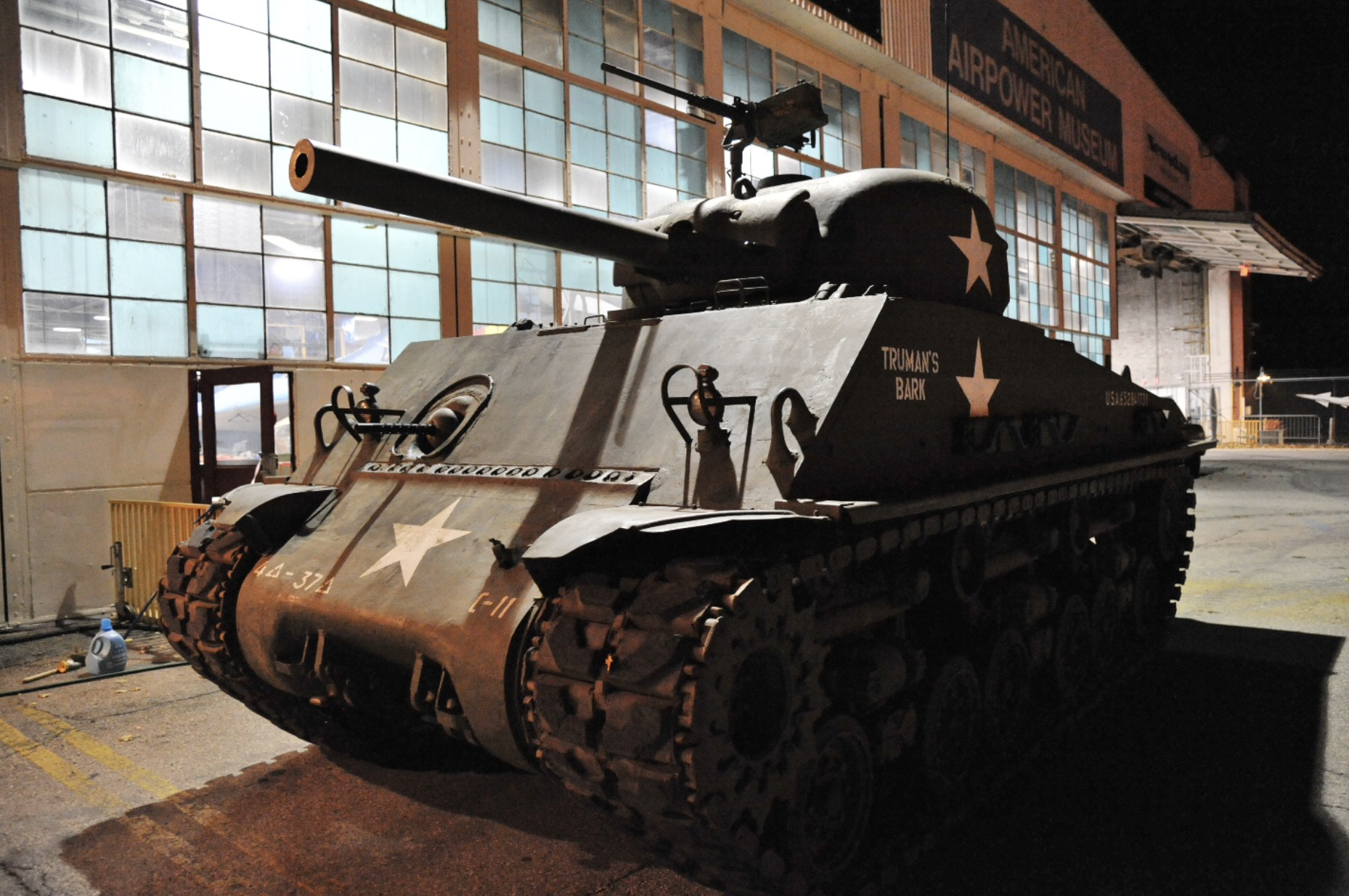
At home, Republic Airport, November 2010 with temporary gun tube.
At a later date a more proper gun barrel was fabricated from aluminum stock. It was machined with a prototypical taper, cut to the correct length, and drilled out to a bore diameter of a 75MM gun. Note also in the above photo that the bow machine gun has been installed along with a .50 caliber machine gun atop the turret.
The Museum’s new, operable Sherman was instantly popular with museum visitors whether on static display or on the move in the fields adjacent to the airport. The M4 began to work in concert with the Museum’s other early acquisitions including the M8, M20 and M3 Halftrack and developed the very beginnings of what later became our award-winning Armor Experience. Unfortunately, however, in 2011 the Ford GAA V8 engine suffered catastrophic internal damage and was deemed irreparable.
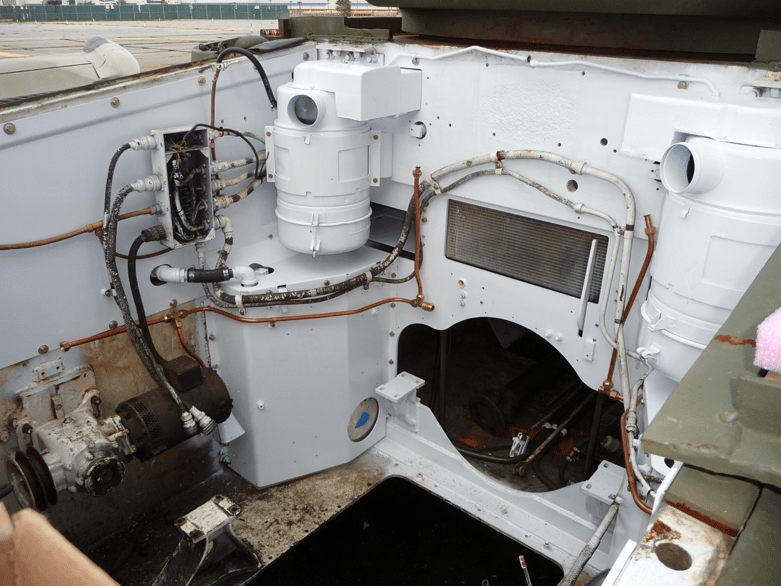
Empty Sherman engine bay awaits re-built engine, 2011
A used GAA V8 was purchased later that year and installed, giving the Sherman almost another decade of good service. In the interim, the Museum of American Armor had moved to its new, permanent home in Old Bethpage on June 6, 2014. Following that transition, the pace of operational use of the Sherman and other Museum vehicles picked up substantially.
With that welcomed increased use came the inevitable maintenance issues. Track wear was one of them. With well over a decade of service on them, by October of 2018, the raised rubber chevrons on the T48 track shoes were worn almost flat and some track end connectors were contacting the ground. A complete set of new tracks had been purchased years prior in anticipation of the needed renewal and they had been stored in segments of 6 to 8 track shoes each. The old track runs were removed, two new complete runs were assembled, and then installed on the Sherman, the task entirely accomplished by our volunteer staff at the Museum.
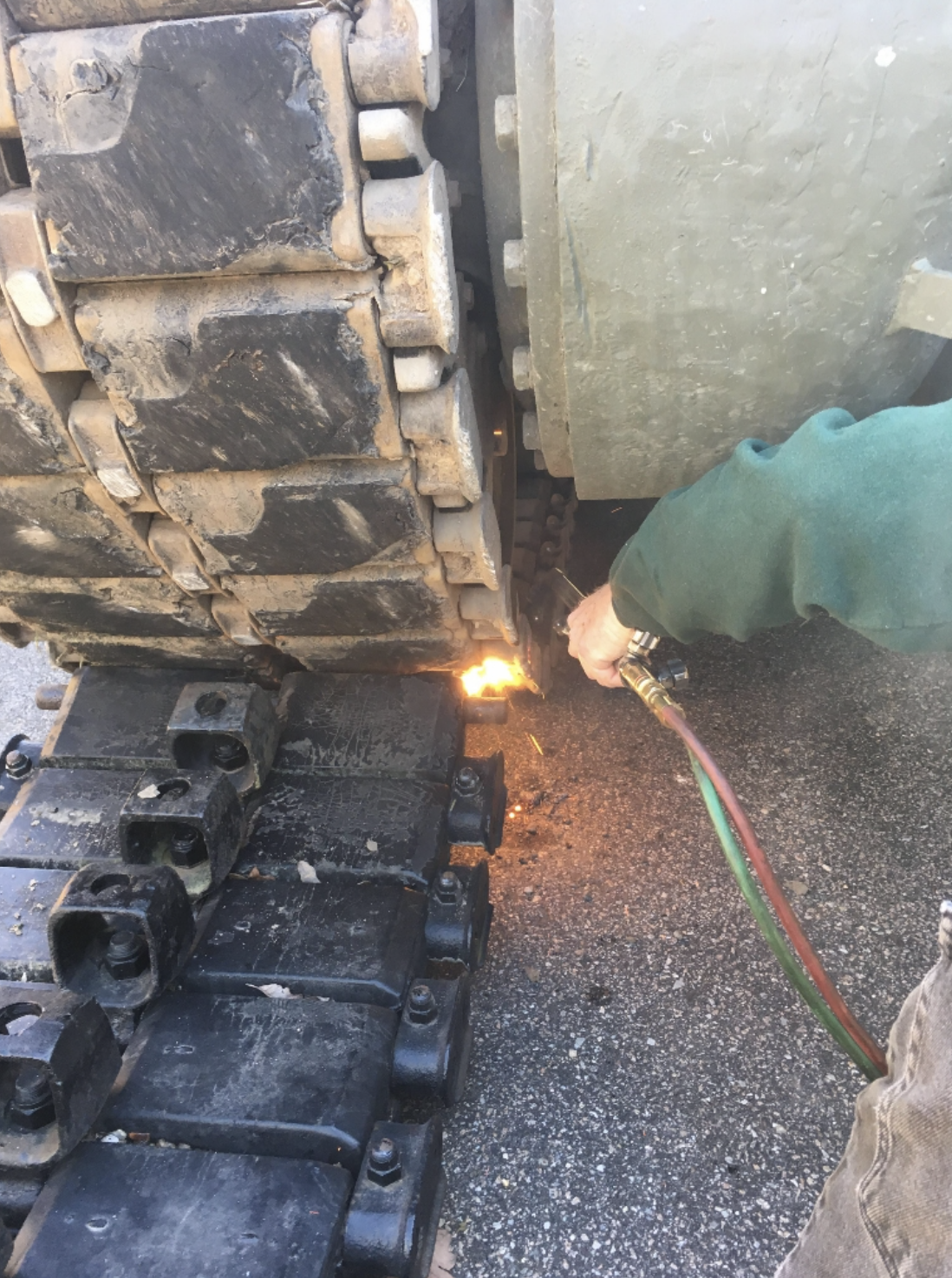
Stubborn end connector on the old tracks being torched. Note rubber ‘chevrons’ worn nearly flat and new track section behind and below old track
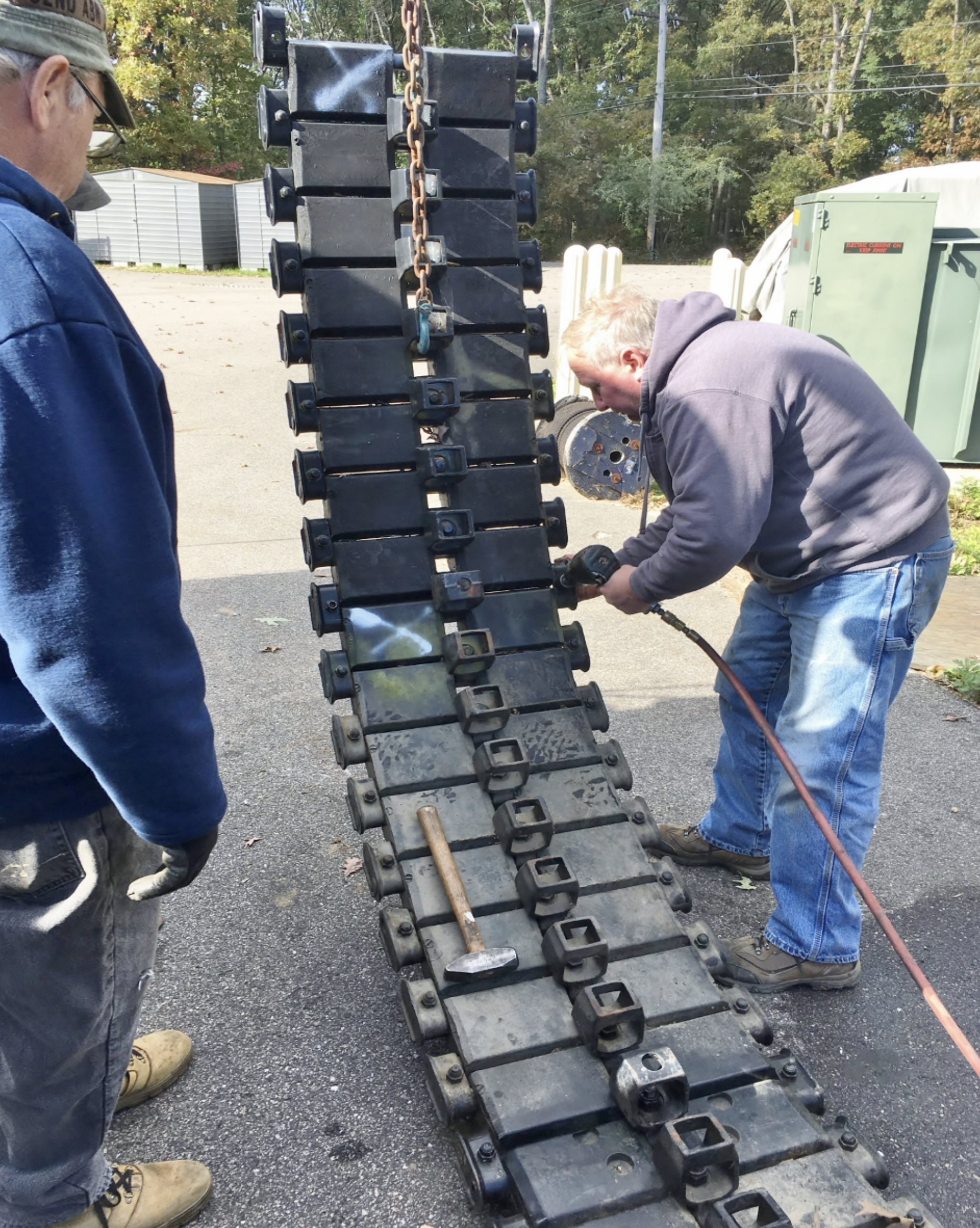
The new tracks had been stored in short sections of about 6 shoes, with each shoe weighing more than 35 pounds. Here volunteers assemble sections into a complete track run.
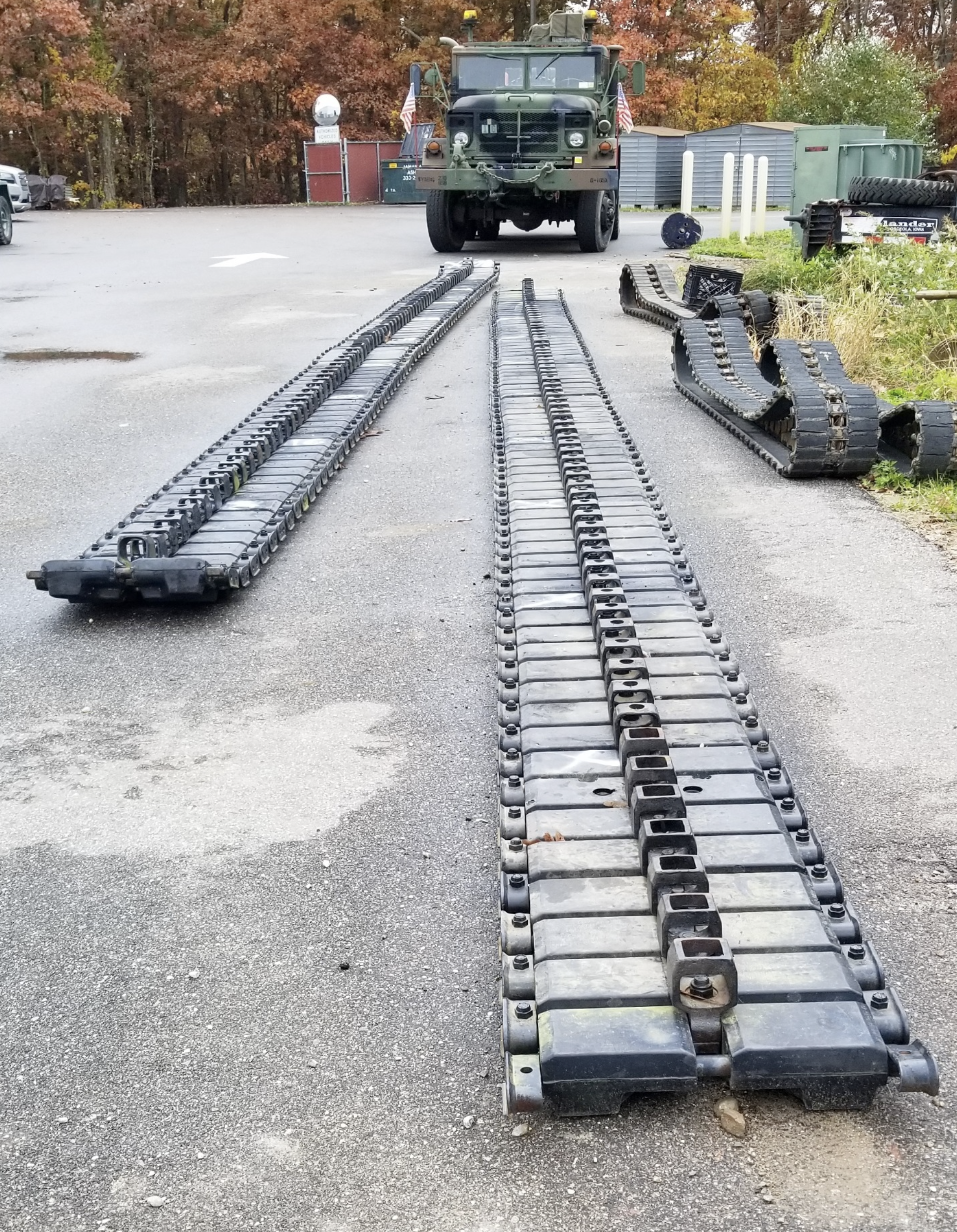
Completed track runs await installation on the Sherman. Note how the rubber bushings of the new track tend to make the ends curl up slightly. One piece tracks for our M2 halftrack are in the background, right
And of course that same increased pace of operational use placed a strain on the used engine installed in the Sherman in 2011. With valve train problems becoming increasingly evident in 2021 and the knowledge the Museum wanted to have a reliable power plant for the coming Sherman 80th Anniversary a decision had to be made whether to repair the engine or find a ready to use replacement. With the knowledge that a complete rebuild of the existing engine might well lag deep into 2022, the search began for a used but reliable GAA8 replacement engine. In early 2022 an M32 Tank Retriever was purchased and although the hull and interior will need further restorations, the engine was judged suitable for transplant into our Sherman. Once again, Museum of American Armor volunteers handled the task and completely in house, removing the ailing Sherman engine, disconnecting and removing the M32 engine, making initial preparations and then its installation into the Sherman.
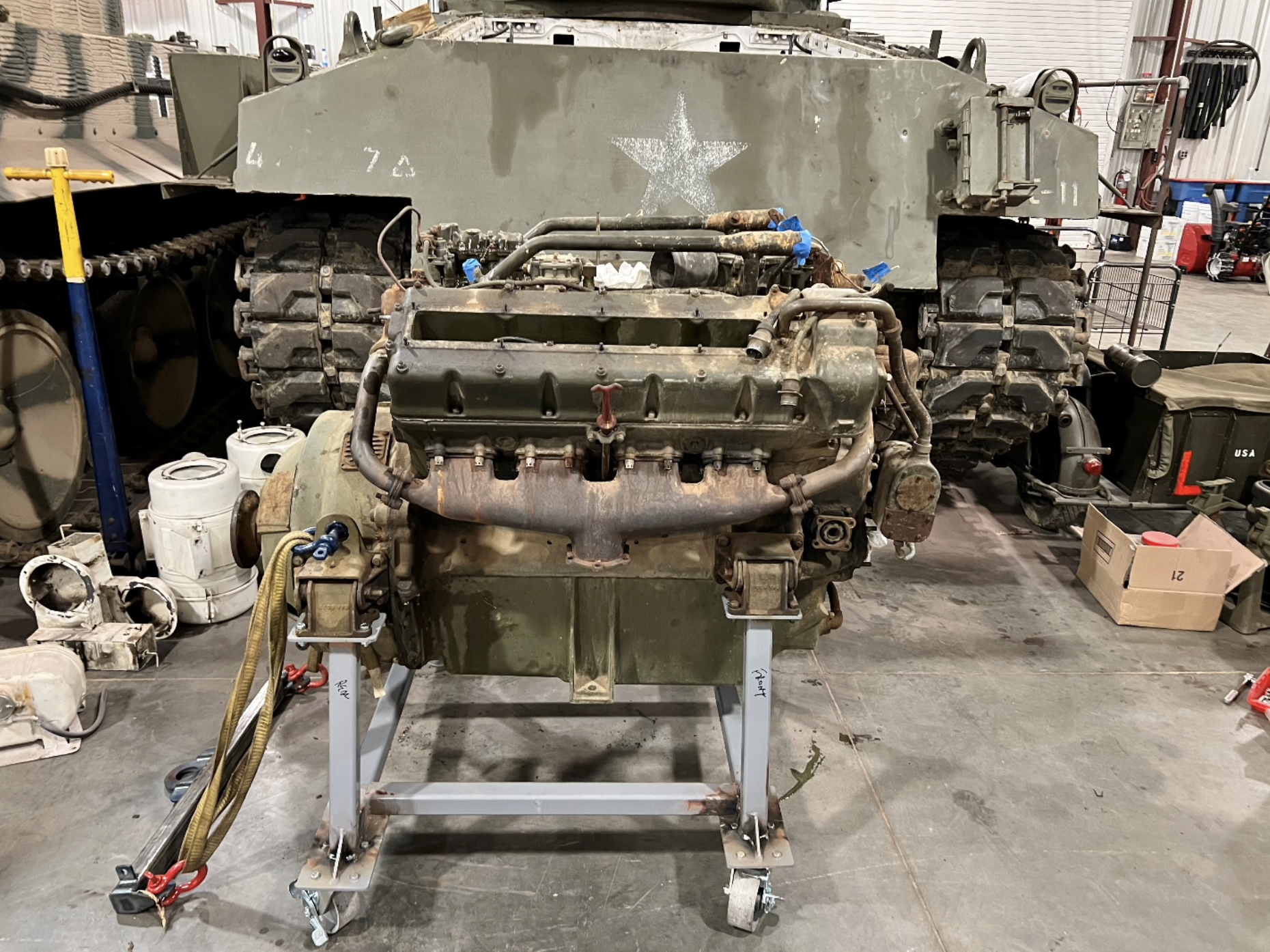
Ford GAA8 Engine removed from M32, awaiting installation into Museum’s Sherman seen in the background
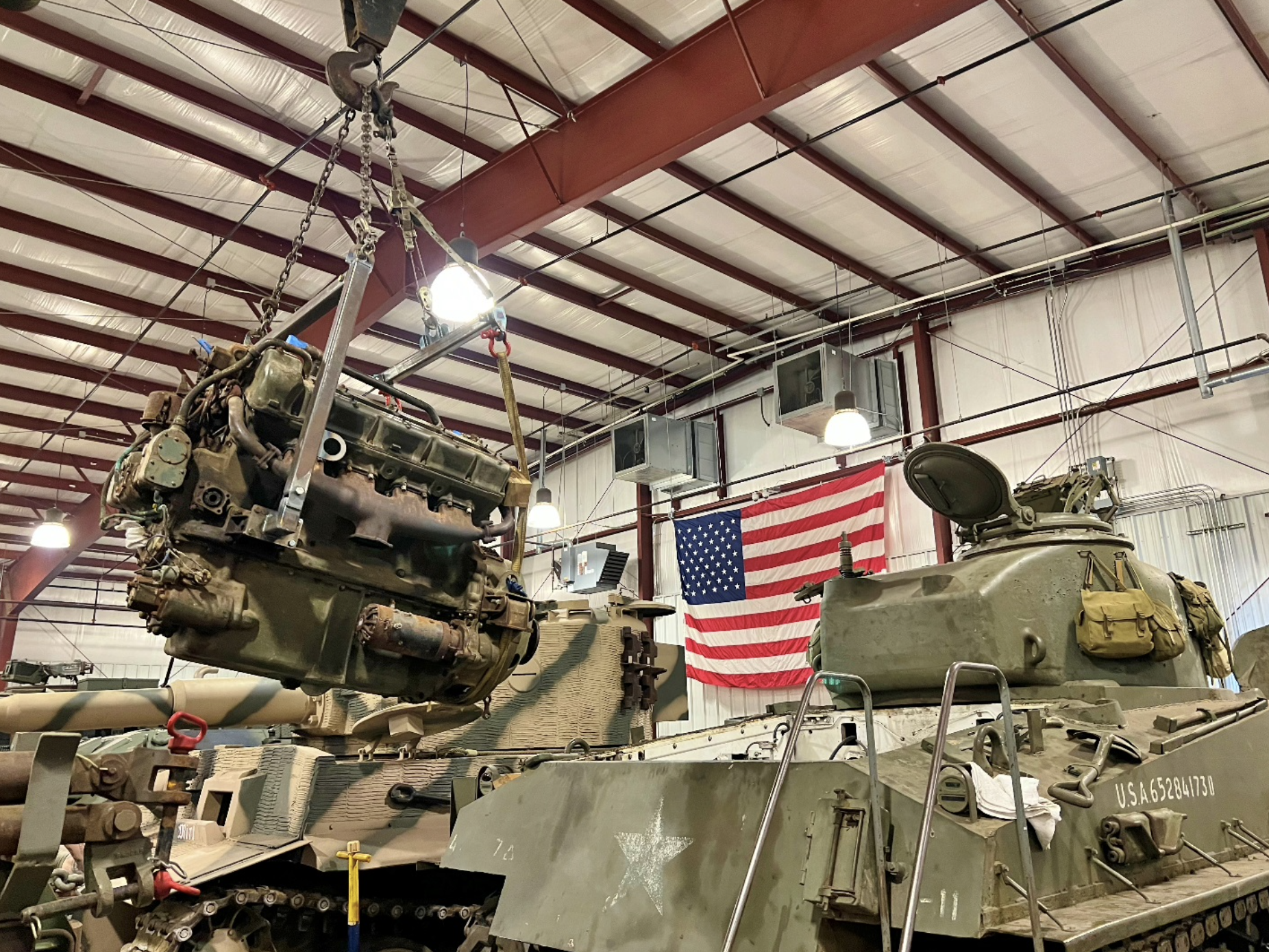
M32 GAA8 engine being transferred into the Sherman
The engine swap was completed in an efficient and timely manner, giving our Sherman a complete year of operational use during this important anniversary year of 2022 and no doubt many years into the future. Hopefully the Winter of 2022/2023 will bring us the opportunity to do some external paint and restoration on the Museum Sherman.
Does The Museum’s Sherman Replicate A Correct M4 Variant?
Now that we have traced the long, 77 year evolution of the Museum’s Sherman, let’s study the final part of our story. As you can well imagine, the Museum of American Armor attracts a wide spectrum of visitors to our facility, from the just curious to the most dedicated tank devotees and everyone in between. It’s from the latter groups of visitors that we sometimes get the comments that late model M4s with the HVSS track system never mounted a 75 MM gun in a mid-production turret. And while it is fair to say that this may be a lesser known type of Sherman, the variant did indeed exist.
W%20HVSS%20In%20England%2c%201945.png?width=1850&height=1114&name=M4A3%20(75)W%20HVSS%20In%20England%2c%201945.png)
M4A3 (75)W HVSS In England, 1945
Our Sherman now most closely replicates the M4A3(75)W with HVSS. Records indicate that Fisher Body built approximately 650 of this particular variant. While the majority of the new HVSS Shermans mounted the 76MM gun in the T23 turret, Army Ordnance also thought it wise to continue some production of tanks with the 75MM gun. Although lacking the armor penetration capabilities of the 76MM, the 75 MM gun delivered a superior high explosive round, still in demand in the European theater and anticipated to be required in the then planned invasion of Japan. Additionally, the British desired the more modern HVSS hull with the mid-production turret for conversion to their 17 pounder Firefly standards.
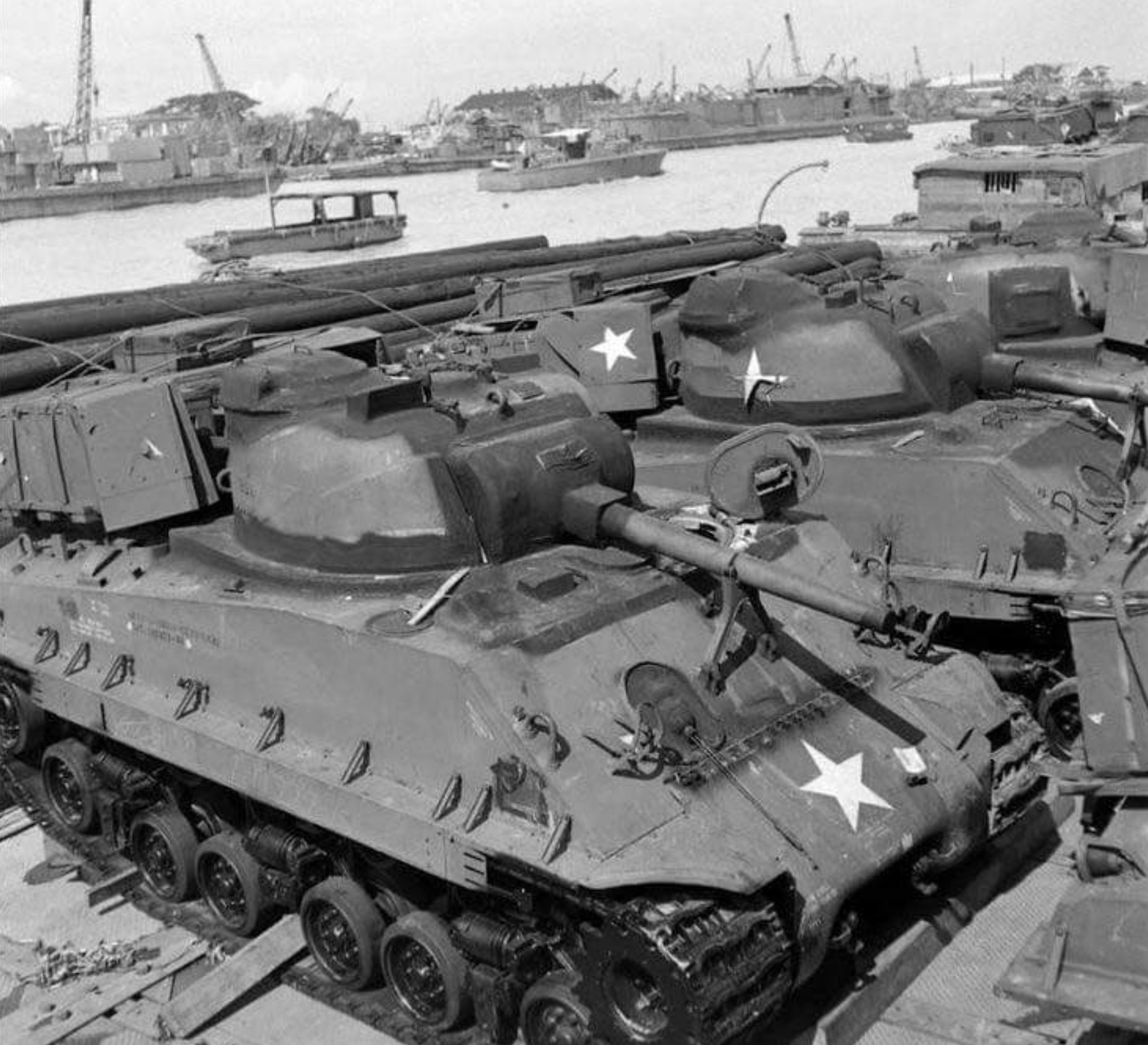
Weatherproofed M4A3 (75)W HVSS Shermans Await Shipment To Pacific Theater, 1945
It is interesting to note that Fischer Body sourced many of the turrets used on its M4A3(75) HVSS tanks from previously used stocks, namely from tank retriever conversions by Baldwin Locomotive. This turret recycling coincidentally but conveniently dovetails with our own Sherman’s history; if you will recall, the original Dutch civilian owners purchased an early Sherman turret and mated it with the later HVSS hull, much like Fisher Body had done years before.
The Army’s historical documentation on the combat use of the M4A3(75)HVSS is incomplete at best. But it is known that at least one of this particular Sherman variant saw combat service with American forces in Europe with the 16th Armored Division.
W%20HVSS%20of%20the%2016th%20Armored%20Division%20in%20Pilsen%2c%20Czechoslovakia%2c%20May%2c%201945.png?width=1868&height=1316&name=%E2%80%9CHardboiled%E2%80%9D%2c%20an%20M4A3(75)W%20HVSS%20of%20the%2016th%20Armored%20Division%20in%20Pilsen%2c%20Czechoslovakia%2c%20May%2c%201945.png)
“Hardboiled”, an M4A3(75)W HVSS of the 16th Armored Division in Pilsen, Czechoslovakia, May, 1945
The Future
So to date, that is the history of the Museum of American Armor’s Sherman Tank. Where it was originally manufactured, its original role, how it was modified by both the US Army and the later civilian owners, and how our Museum has maintained and operated it. But as we close out the 80th anniversary of the Sherman series of tanks, rest assured there will be far more to come!
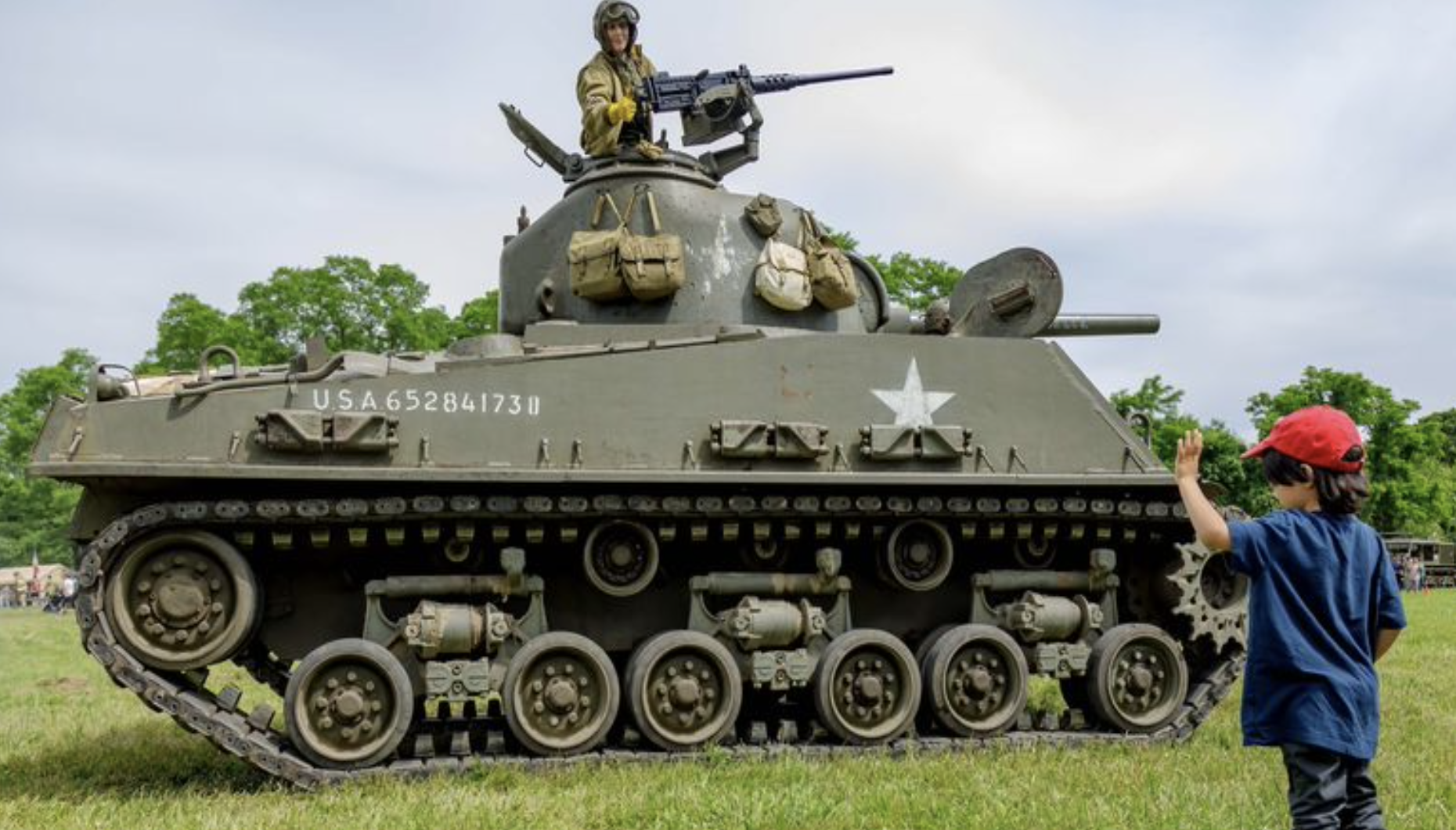
A young museum visitor Is Introduced to The Armor Museum’s Real, Live Sherman
By Kevin Carroll, with much thanks to Gary Lewi and Dave Levy
November 13, 2022
